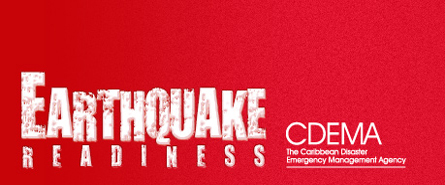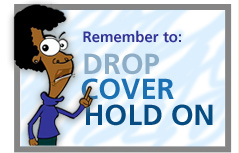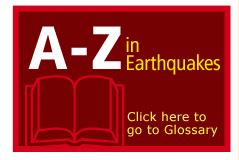|
The History of Drop,
Cover and Hold On
What to do when an Earthquake strikes
and why
The Background
The key message of the Caribbean Disaster Emergency Response Agency's Earthquake Readiness Campaign for the region reminds Caribbean people of the potentially live-saving action to take if an earthquake strikes - Drop, Cover and Hold On. In brief, disaster experts urge people who are inside a building to stay inside and away from windows and do the following:
1. DROP under a heavy desk or table
2. COVER your head and torso
3. HOLD ON to the furniture. If you can't get under something strong, go to an interior wall and sit with your bottom and feet flat on the floor and protect your head. If you are outside, go to an open area.
The message runs up against the instinct of most people to flee and, according to experts who have studied the cause of earthquake casualties, it is fleeing that kills more people as collapsing buildings crush people on the outside - walls tend to fall outward not inward.
DOUG COPP & THE TRIANGLE OF LIFE
Enter the Doug Copp controversy - an email circulated across the globe in 2004 by Doug Copp, a self-styled disaster rescue expert, which challenges the Drop-Cover-Hold-On message and suggests that a "Triangle of Life" exists in the spaces between study objects and walls. In short, people are urged to crouch beside a sturdy object, like a desk, rather than under it.
Copp labelled the Drop-Cover-Hold On message as the "Duck and Cover" theory - a derisive reference to the Duck and Cover message behind the Cold War-era civil defense drills of the 1950s. This was a personal protection drill that was used in American schools should a Soviet nuclear weapon be detonated in the United States, a message now recognised as being an infamous, and utterly useless, response to a thermonuclear attack.
The American Red Cross issued a firm rebuttal to Copp but nonetheless suggested that there may be some validity to his theory outside of the United States. (Appendix One: Read the American Red Cross letter).
The obvious questions then, are: Is "Drop, Cover and Hold on" relevant to the Caribbean? Do Caribbean earthquake experts endorse this approach? Is this really the best action to take given the nature of Caribbean construction?
In October 2008, the University of the West Indies Seismic Reseach Centre, the authority and monitoring centre on earthquakes, volcanoes and other major geological events in the region issued the following article, "The Triangle of Life: An Eastern Caribbean Perspective", which not only answers the Copp Controversy but explains why "Drop, Cover and Hold on" is the best advice to Caribbean people caught indoors during an earthquake. READ MORE
Mr. Copp's theory of the ‘Triangle of Life' has been around for at least two years and can be read in its entirety at the website http://www.snopes.com/crime/warnings/triangle.asp. Our investigations suggest that he is viewed with scepticism in the United States and because buildings do not usually collapse in the US, his advice is not considered important in their strategy during an earthquake (see the American Red Cross' response to the theory at this website: http://www2.bpaonline.org/Emergencyprep/arc-on-doug-copp.html).
back to top
|













